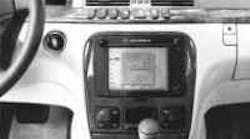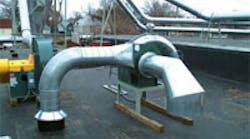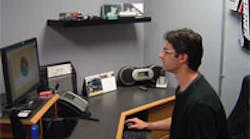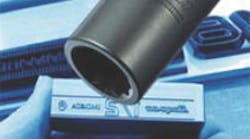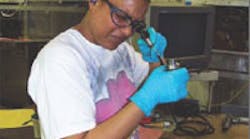Ashlar-Vellum's Vellum Solids software aided in producing the iRadio's enclosure and internal components.
Prisma Design International Inc., based in Tustin, Calif., provides design renderings, ergonomic studies, complete engineering, digital surfacing, digital modeling, milling and stereolithography, functional mock-ups, and running prototypes as well as other goods and services. The company faced a tight deadline when hired by Motorola to design the iRadio, an electronic device for automobiles that combines entertainment, information, navigation, emergency calling, and communication.
Motorola needed a prototype for a show less than two months away. In addition to the tight time frame, Prisma faced another challenge. "We didn't have the freedom we usually have for a new product," says Gerhard Steinle, president of Prisma. "We had to incorporate the iRadio's design around existing parts of an automobile, and the iRadio had to fully blend into the car's interior." For the task, Prisma designers created hand sketches of different concepts and generated a digital model using the integrated modeling tools within Vellum Solids software from Ashlar-Vellum.
The software proved a good choice. Its Drafting Assistant feature, which automatically identifies relationships such as endpoints, midpoints, center points, tangencies, and real and extended intersections, let Dan Caruthers, senior designer at Prisma, quickly produce models of the iRadio's internal components.
Next, Caruthers modeled the iRadio's enclo-sure. Unlike some midrange solid-modeling programs, which require modeling the enclosure only in solids, Vellum Solids lets users create a series of 2D lines and curves representing an item's cross section. In addition, the software's surface-modeling and solid-modeling tools are in a unified working environment and accessible from one of three palettes. There is also no need to transfer from one mode to another to access these tools.
With the software's Sweep-2rails tool, Caruthers automatically generated the enclosure's surface. A stitch tool let him make a number of separate surfaces, representing different areas of the enclosure, and then combine them. The next step was to turn this block into the shell that would become the enclosure. For this, he simply selected the solid, invoked the shelling command and entered shell-wall thickness.
Caruthers fine-tuned the design using more of the software's modeling tools to define complex surfaces, stitch them together to form a solid object, and then offset the object by 2 mm to create the walls of the iRadio's enclosure almost automatically. This can be a labor-intensive operation with other CAD programs because offsetting an object leaves open edges that must be filled in by hand.
Prisma completed the iRadio prototype in 50 hours. That's 25 hours faster than if the shop had used a traditional CAD program instead.
Ashlar-Vellum,
Austin, Tex.
[email protected]
www.ashlar-vellum.com
